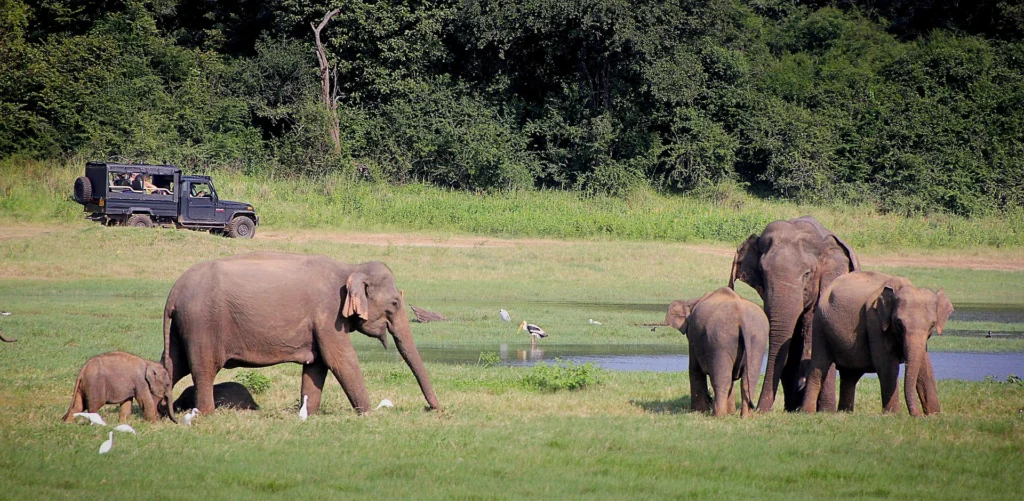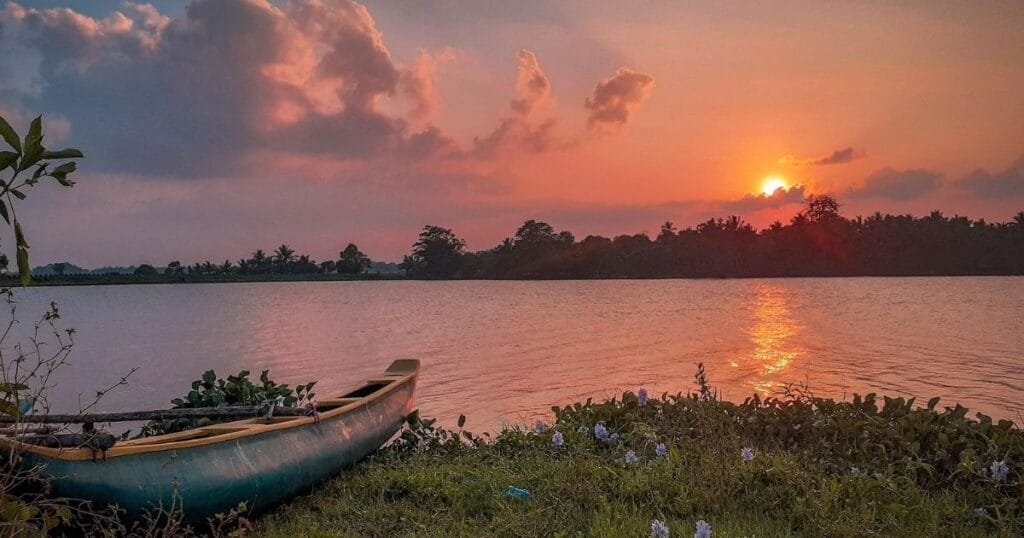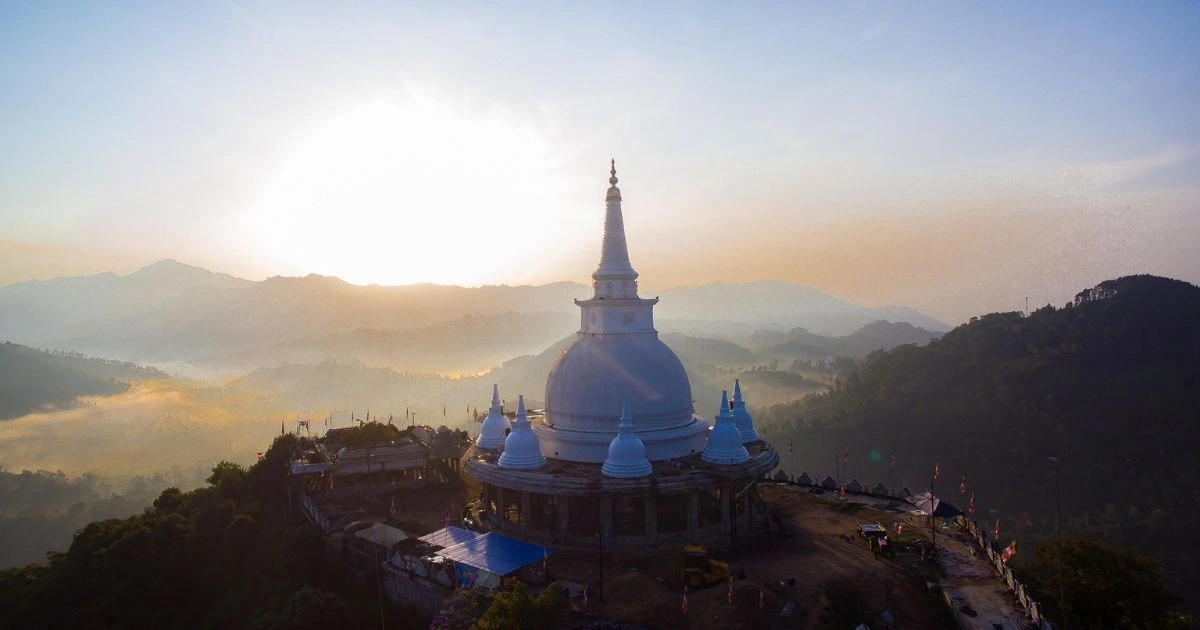Plan Your Perfect Getaway: Best Time To Travel To Sri Lanka
Imagine stepping into a tropical paradise. Here, emerald landscapes meet pristine beaches, and ancient temples tell stories of the past. Sri Lanka is a place of natural beauty and cultural richness. Choosing the right time to visit can make your trip unforgettable.
Knowing Sri Lanka’s weather is key to planning your dream trip. The island’s climate has different travel times that can change your experience. Whether you want sun-kissed beaches, wildlife, or culture, timing is crucial.
Sri Lanka’s weather is important for finding the best travel moments. From beautiful coastlines to misty mountains, each season offers unique experiences. Planning well can lead to the most memorable journey in this tropical gem.
Table of Contents
Key Takeaways
- Sri Lanka offers diverse travel experiences throughout the year
- Climate varies significantly across different regions
- Peak tourist season runs from December to March
- Monsoon seasons impact travel plans and activities
- Careful timing can maximize your travel experience
Understanding Sri Lanka’s Climate Patterns
Sri Lanka’s unique location creates a fascinating climate system. This system greatly affects travel experiences. The island has two monsoon seasons and two inter-monsoon periods. It’s important to know these cycles when planning your visit.

The monsoon season is key to Sri Lanka’s weather. Travelers need to know a few important climate facts:
- Temperature in Sri Lanka in July is usually between 26-30°C
- Sri Lanka’s weather in August can be unpredictable with more rain
- Rainfall varies a lot across different regions
Northeast Monsoon Season
The Northeast Monsoon runs from December to February. It brings a lot of rain to the northern and eastern parts of the island. This time can make travel hard for coastal areas, with lots of rain and strong winds.
Southwest Monsoon Season
The Southwest Monsoon happens from May to September. It affects the western, southern, and central parts of Sri Lanka. During this time, the island gets a lot of rain, especially in mountains and coastal areas.
“Understanding the monsoon patterns is key to planning a successful Sri Lankan adventure.” – Travel Expert
Inter-monsoon Periods
Between the main monsoon seasons, Sri Lanka has transitional periods. These times have more stable weather, making them great for travelers looking for a balanced climate.
Knowing these complex climate patterns helps you plan your trip better. This way, you can enjoy your trip more and avoid weather problems.
Peak Tourist Season: December to March
Sri Lanka’s peak tourist season is from December to March. It’s the best time to visit with great weather and amazing experiences. The island is filled with sunshine, cultural events, and outdoor fun.

This season offers many exciting opportunities for visitors. You’ll find perfect conditions for exploring the country’s landscapes and cultural spots.
Holiday Festivities and Events
Sri Lanka is alive with celebrations and events during the peak season. You’ll find a variety of exciting experiences:
- Christmas and New Year celebrations in coastal resorts
- Traditional local festivals like Duruthu Perahera
- Cultural performances showcasing Sri Lankan heritage
Accommodation Rates and Availability
Plan your trip early to get the best deals on accommodations. Prices are higher during the peak season. Book your stay in popular spots well in advance.
| Accommodation Type | Average Price Range | Availability |
|---|---|---|
| Luxury Resorts | $200-$500 per night | Limited |
| Budget Hotels | $50-$100 per night | Moderate |
| Guesthouses | $30-$80 per night | Good |
Popular Tourist Activities
There are many activities to enjoy during the peak season:
- Beach holidays in southern coastal regions
- Wildlife safaris in national parks
- Cultural tours of ancient cities
- Surfing and water sports
- Hiking and mountain treks
While the peak season is great, it can be crowded and pricey. Plan ahead and book early to enjoy your Sri Lankan adventure fully.
Beach Holiday Planning: Regional Weather Variations
Planning a beach holiday in Sri Lanka means knowing the weather patterns. The right time and place make your tropical dream come true. Sri Lanka’s coast has beautiful beaches with their own seasons.
Choosing the right beach in Sri Lanka is key. The island’s shape affects the weather, changing beach experiences all year.
East Coast Beaches: Tropical Paradise from May to September
In May, the east coast of Sri Lanka is a stunning place to be. Trincomalee and Arugam Bay are perfect for those who love the sun and water. You’ll find:
- Crystal-clear waters
- Consistent sunny conditions
- Excellent surfing opportunities
- Fewer tourists compared to peak seasons
South Coast Beaches: Winter Wonderland from December to April
The south coast, like Unawatuna and Mirissa, is amazing in the dry season. You’ll find clean beaches, calm seas, and great sunbathing spots. Highlights include:
- Ideal swimming conditions
- Whale watching opportunities
- Vibrant beach resort atmosphere
- Warm, stable temperatures
West Coast Options: Flexible Beach Experiences
Negombo and Colombo beaches offer flexible options. They have good weather all year, perfect for travelers with flexible plans.
Pro tip: Always check local weather forecasts and pack appropriate beach gear to maximize your Sri Lankan coastal experience.
Wildlife Safaris and National Park Visits
Sri Lanka is home to some of the world’s most amazing wildlife safaris. You’ll see the country’s diverse wildlife and beautiful landscapes. The best time to visit depends on the park and the animals’ behavior.
Yala National Park is a top spot for wildlife safaris in Sri Lanka. From May to September, you can see:
- Leopards in their natural habitat
- Herds of Asian elephants
- Diverse bird species
- Crocodiles and water buffalo
Udawalawe National Park is another great place for wildlife safaris. Elephant watching is a highlight here, with almost guaranteed sightings all year. The park’s open terrain makes it easier to spot animals.
Here are some tips for wildlife safaris in Sri Lanka:
- Book guided safaris with experienced naturalists
- Bring the right camera equipment
- Wear neutral-colored clothing
- Follow park conservation guidelines
Wilpattu National Park is special during the dry months. It’s less crowded and offers chances to see rare animals like sloth bears and leopards.
“The magic of Sri Lankan wildlife is not just in seeing animals, but in understanding their delicate ecosystems.” – Wildlife Conservation Expert
Planning your wildlife safari is key. The best time to see wildlife in Sri Lanka is from February to September. This is when animals are easier to spot because the vegetation is sparse.
Budget-Friendly Travel: Low Season Benefits
Traveling to Sri Lanka in the low season is a great deal for those watching their budget. It’s a chance to see this beautiful place without spending a lot or dealing with crowds.
November is a top choice for budget travelers. The weather is mild, making it easy and affordable to explore.
Unbeatable Discounts Await
Off-peak months mean big savings on travel costs:
- Hotel rates drop by up to 40%
- Cheaper ways to get around
- Discounted tour packages
- Lower prices at famous spots
Enjoy Authentic Experiences
Low season travel lets you connect with locals more. With fewer tourists, you get a closer look at Sri Lankan culture.
Embrace Quieter Destinations
Imagine visiting famous sites, beaches, and parks without the crowds. Low season turns these spots into your own playground, offering a more relaxed trip.
“The best adventures happen when you step off the beaten path.” – Travel Wisdom
Pro tip: Always check the local weather and pack right to make the most of your Sri Lanka trip.
Festival Season and Cultural Celebrations
Planning your trip to Sri Lanka? Knowing about the country’s cultural festivals can make your trip unforgettable. Sri Lanka’s festival calendar is full of traditions and celebrations. It offers travelers a deep look into the island’s culture.
Cultural festivals in Sri Lanka happen all year round. They give travelers a chance to see the island’s mix of religious and cultural traditions. People from all over the world come to experience these celebrations.
- Kandy Esala Perahera: A spectacular Buddhist festival featuring elaborate elephant processions
- Thai Pongal: A harvesting festival celebrating agricultural abundance
- Vesak: Buddhist celebration commemorating Buddha’s birth, enlightenment, and death
- Independence Day: National celebration with parades and cultural performances
Each festival is a special way to see Sri Lankan culture. Travelers get to experience things that go beyond the usual tourist spots.
| Festival | Month | Cultural Significance |
|---|---|---|
| Kandy Esala Perahera | July/August | Buddhist religious celebration with traditional dance and elephant processions |
| Thai Pongal | January | Hindu harvest festival honoring the sun and agricultural prosperity |
| Vesak | May | Buddhist commemoration with lantern displays and spiritual ceremonies |
When picking the best time to visit Sri Lanka for festivals, think about what interests you. Each festival gives a different view of Sri Lankan traditions. It makes for a memorable trip.
Adventure Activities and Weather Considerations
Sri Lanka is a paradise for adventure lovers. It has diverse landscapes perfect for many activities all year round. The island’s geography makes it ideal for exciting adventures.
When planning your trip, timing is key. Different areas offer unique experiences based on the weather:
- Hiking in Central Highlands (December-March)
- Surfing on Southern Coast (November-April)
- White-water rafting in Kelani River (May-September)
Exploring Sri Lankan cuisine is also a must. Each region has its own flavors. Mountain areas have hearty meals, while coastal spots offer fresh seafood.
| Activity | Best Season | Recommended Region |
|---|---|---|
| Hiking | December-March | Ella, Nuwara Eliya |
| Surfing | November-April | Arugam Bay, Mirissa |
| White-water Rafting | May-September | Kelani River |
Don’t forget to pack the right gear and check the weather forecast. Each season brings new chances to see Sri Lanka’s stunning landscapes and exciting activities.
Health and Safety: Weather-Related Precautions
When planning your trip to Sri Lanka, health and safety are key. The tropical climate requires special preparation for a safe and enjoyable journey. Knowing the local weather helps you choose the best time to visit.
Traveling in Sri Lanka’s varied weather needs careful planning. The tropical areas have high humidity, strong sunlight, and possible monsoons. Wear light, breathable clothes, use high-SPF sunscreen, and choose moisture-wicking fabrics to stay cool and protected.
Monsoon Safety Tips
Stay updated on local weather and flood risks during monsoons. Bring waterproof gear like a rain jacket and water-resistant shoes. Avoid traveling in heavy rain in areas known for sudden weather changes. Keep your electronics dry and carry important medicines in waterproof bags.
Sun Protection Measures
Sri Lanka’s location near the equator means strong UV rays all year. Use sunscreen with at least SPF 50, wear hats, and sunglasses with UV protection. Drink lots of water and stay in the shade during the hottest part of the day.
Health Recommendations
Check with your doctor before traveling and get any needed vaccinations. Bring a first-aid kit with rehydration salts, antiseptic wipes, and your medications. Having travel insurance that covers medical emergencies is crucial when exploring Sri Lanka’s different climates and landscapes.
FAQ
What is the best time to visit Sri Lanka?
The best time to visit Sri Lanka depends on what you want to do. The peak season is from December to March, with dry weather perfect for beaches and culture. For east coast beaches, May to September is best. South coast beaches are great from December to April.
How do monsoon seasons affect travel in Sri Lanka?
Sri Lanka has two monsoons: Northeast (December to February) and Southwest (May to September). These seasons change the weather in different parts of the island. The in-between times (March-April and October-November) usually have better weather for travelers.
Is it cheaper to travel during the low season?
Yes, low season travel is cheaper. You’ll find lower prices, fewer people, and more real experiences. November is less crowded and offers great deals and cultural immersion.
What should I pack for different weather conditions in Sri Lanka?
Bring light, breathable clothes and rain gear for monsoons. Include long-sleeved shirts and pants for sun protection, a light jacket for cool nights, and comfy shoes. Don’t forget sunscreen, a hat, and clothes that wick away moisture.
Are wildlife safaris affected by seasonal weather?
Wildlife viewing changes with the seasons. Yala National Park is best from February to July. Udawalawe is great for elephants all year. Dry seasons are best for seeing animals, as they gather near water.
What are the key cultural festivals to consider when planning a trip?
Don’t miss the Kandy Esala Perahera (July/August), Thai Pongal (January), and Vesak (May). These festivals offer unique cultural experiences. But, they can also mean more people and higher prices, so plan ahead.
What adventure activities are best in different seasons?
Surfing is great on the south and west coasts from November to April. Hiking and trekking are best in the Hill Country from December to March. White-water rafting is best during monsoons when the water is high.
How should I prepare for health and safety during different weather conditions?
Protect yourself from the sun with high-SPF sunscreen, stay hydrated, and wear light, protective clothes. In monsoons, pack waterproof gear and be ready for travel changes. Consider travel insurance for weather-related issues and have a flexible plan.
What are the best regions to visit in different seasons?
In the dry season, visit the Cultural Triangle and South Coast. The East Coast is better in the inter-monsoon periods. The Hill Country is pleasant all year, making it a great choice any time.
How do I balance budget and travel experience when planning my trip?
Travel in shoulder seasons (March-April or October-November) for good weather and lower prices. Book early, be flexible, and consider visiting multiple places to save money while enjoying your trip.

